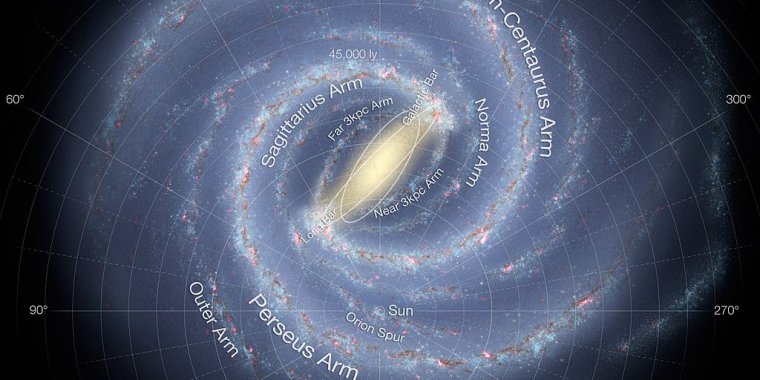| News / Science News |
Scientists Say Milky Way Is Warped & Twisted Not Flat
The newly-created and most accurate 3D map of galaxy reveals that it’s warped and twisted, and even more fascinating.

Artist's conception of the spiral structure of the Milky Way with two major stellar arms and a bar. Photo: NASA/JPL-Caltech/ESO/R. Hurt (PD)
The Milky Way looks nothing like the flat space pancake it is usually depicted as.
A group of astronomers from Australia and China have built their “intuitive and accurate three-dimensional picture” by mapping the so-called “classical Cepheids.”
Burning their fuel quickly, those pulsating stars that live fast and die young are 100,000 times brighter than the Sun. The combination of their pulsation periods and known luminosity allowed the scientists to determine their location with the high accuracy of between 3 to 5 percent.
The coordinates of 1,339 classical Cepheids marked on a 3D map created a twisted and warped galactic disk of our big home.
The Milky Way turned out to be progressively twisted in its outer areas, which is most likely caused by the powerful rotating forces released by the galaxy’s massive internal disk, according to the research.
The team had published the results of their work in the Nature Astronomy, saying that their map will be “crucial” in further studies of the kinematics and archaeology of our galaxy. (Tasnim News Agency)
YOU MAY ALSO LIKE



